A cooking class is a memorable way to imbibe a local culture; this time, Balinese culture. One gets to the heart of a home by seeing exotic and familiar ingredients in all their raw glory. One gets to handle them, prepare them, cook them, and present them as they should be. And the best part is to sit down and feast on them.
This is what I exactly did in a Balinese cooking class at Casa Luna Cooking School. Run by Australian-born Janet DeNeefe since 1989, Casa Luna is listed among the world’s best cooking schools. DeNeefe had lived in Bali for over thirty years and is married to a Balinese man. She is also an award-winning author and the Founder & Director of Ubud Food Festival and Ubud Writers & Readers Festival.

What did I learn from that cooking class? I learned that Balinese cuisine uses similar ingredients
However, I also learned that our neighbor uses candlenut (kemiri), cloves (
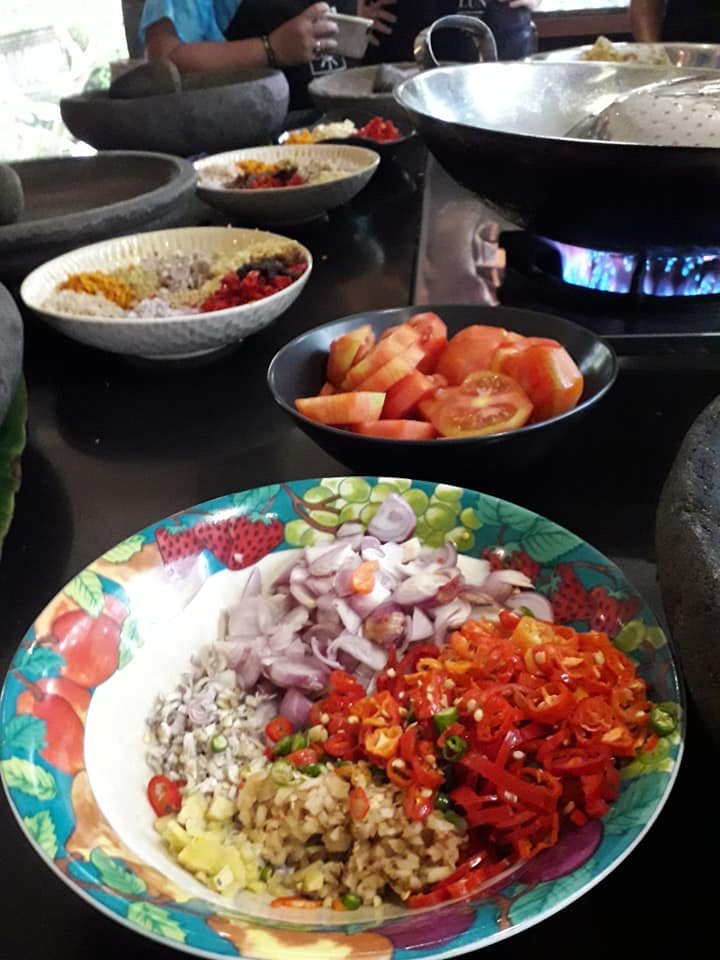
Here, we learned how to make sambal, a chili paste or sauce which is the base of many Balinese dishes. As essential as our
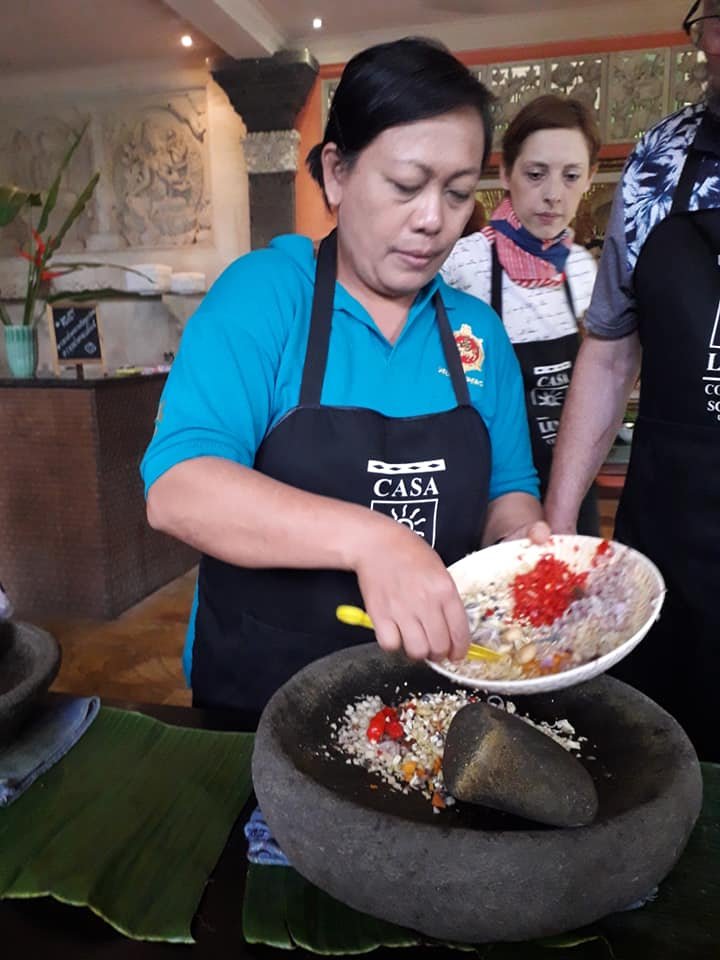
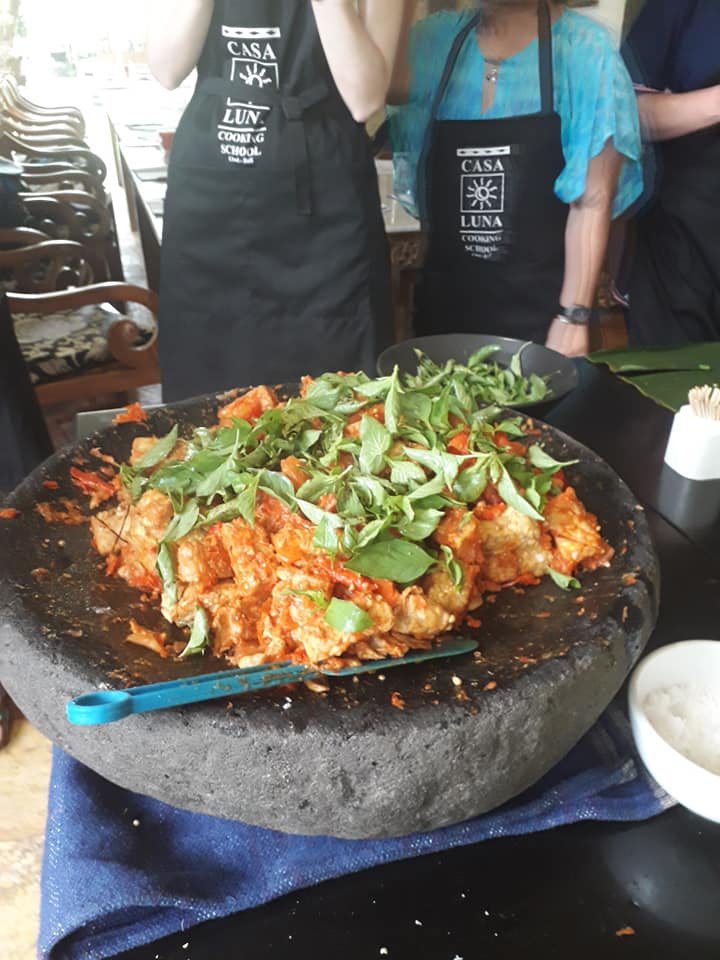
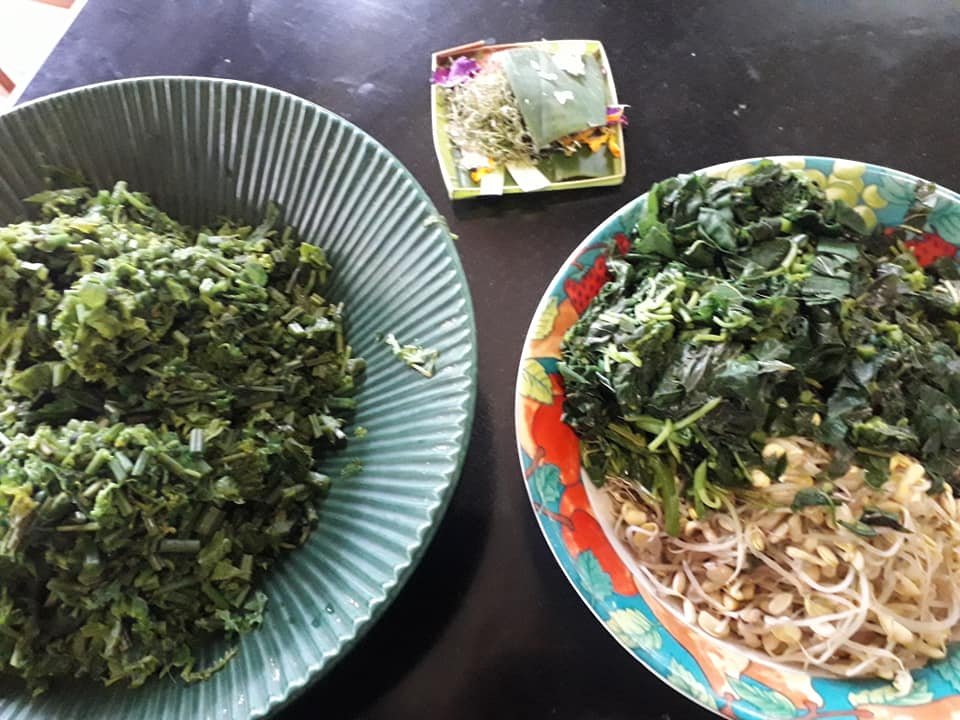
turned into salads
Fresh, lovely ingredients make up very healthy meals in a Balinese household. Huge stone mortars set on the ground and long-handled wooden pestles are still being used for home cooked meals. At Casa Luna, we used the rounded flat-sided stone mortars with a curved surface (as opposed to our bowl-shaped mortars) and short-handled pestles that have ends carved to enable the user to crush and bruise ingredients horizontally
When all 9 dishes were prepared and set on a long table, 9 classmates from Australia, Italy, England

While in Bali, sit down and have some babi guling. Have it around lunchtime when there is enough for everyone. After lunch, most vendors would have cleared away their stalls when their supply had been bought out. Business is good!
My regret is that I never asked around for sate babi. I could have kicked myself for forgetting!!!! However, my consolation is that I can make a mean one myself with a recipe that I keep under lock and key.
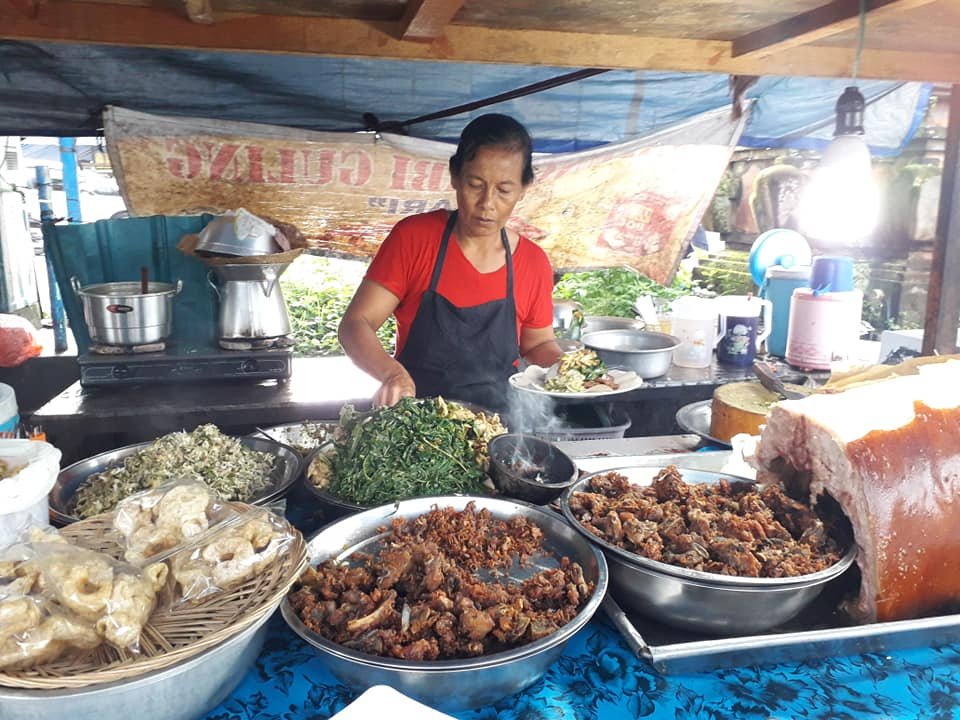
A roadside market at Payangan Village of the Gianyar Regency was a fun stop for babi guling

A plated dish of
and crisp pig skin

